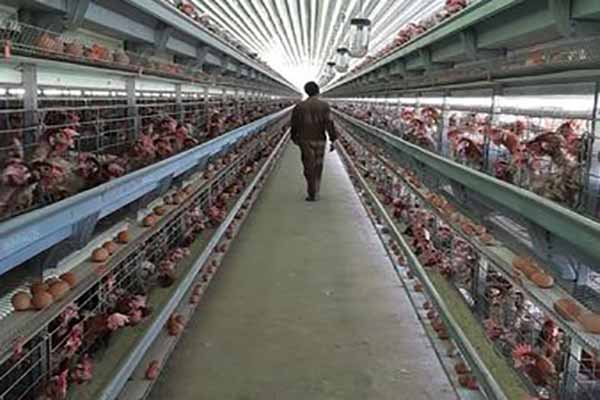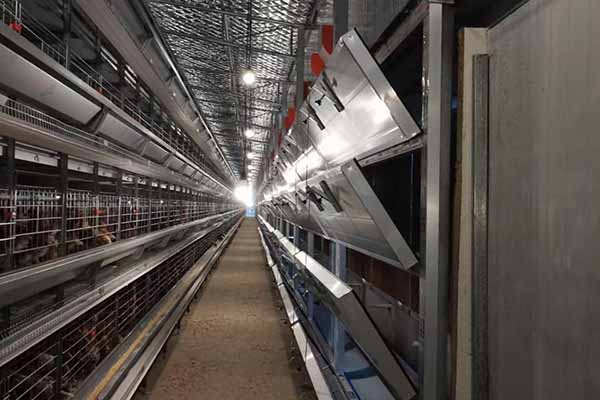Enhancing Chicken Farming Efficiency in Kenya with Advanced Remote Debugging Services for Farming Equipment
Time : 2025-07-02
Kenya’s poultry industry has seen significant growth over the years, with a strong focus on enhancing productivity and sustainability. One of the key components in achieving these goals is the effective operation of farming equipment. To ensure seamless operation and prompt resolution of technical issues, a remote debugging service for chicken farming equipment has emerged as a crucial solution. This article explores the importance of such services in the Kenyan poultry sector, the challenges faced, and the benefits of utilizing advanced remote debugging technology.

The Evolution of Chicken Farming Equipment in Kenya
Over the past decade, chicken farming equipment in Kenya has undergone a remarkable transformation. Modern poultry farming relies heavily on specialized machinery for tasks such as feeding, watering, temperature control, and egg coll ection. However, with this technological advancement comes the need for skilled maintenance and troubleshooting capabilities.
ection. However, with this technological advancement comes the need for skilled maintenance and troubleshooting capabilities.
Traditional Maintenance Challenges
Until recently, maintenance of farming equipment in Kenya was primarily a manual process, requiring technicians to physically inspect and repair machines on-site. This approach had several limitations:
- Time-consuming: Technicians often spent hours traveling to farms and diagnosing issues.
- Cost-intensive: Frequent visits to farms increased the overall maintenance costs.
- Lack of expertise: Some farms may not have access to skilled technicians, leading to prolonged equipment downtime.
The Introduction of Remote Debugging Services
Recognizing these challenges, remote debugging services for chicken farming equipment have been introduced in Kenya. This innovative approach utilizes advanced technology to diagnose and resolve technical issues from a distance, significantly improving the efficiency and cost-effectiveness of equipment maintenance.
How Remote Debugging Works
Remote debugging is made possible through the integration of IoT (Internet of Things) sensors into farming equipment. These sensors collect real-time data, which is then transmitted to a centralized server for analysis. Here’s a step-by-step process of how remote debugging works:
- Data Collection: Sensors installed in the farming equipment continuously collect data on its performance and operating conditions.
- Data Transmission: The collected data is sent to a cloud-based platform using a secure, encrypted connection.
- Data Analysis: Data analytics software analyzes the data to identify potential issues or anomalies.
- Remedial Actions: Once issues are detected, the remote debugging service can provide guidance to the farmer or technician on how to resolve them.
- Real-time Updates: The system provides real-time updates on the equipment’s status, ensuring that any ongoing issues are promptly addressed.
Benefits of Remote Debugging Services
The adoption of remote debugging services for chicken farming equipment in Kenya offers numerous benefits:
1. Reduced Downtime
By diagnosing and resolving issues quickly, remote debugging services minimize the downtime of farming equipment, leading to improved productivity.
2. Cost-Effective Maintenance
With reduced travel time and on-site visits, remote debugging services lower maintenance costs, making them an affordable solution for farmers of all sizes.
3. Improved Equipment Performance
Regular monitoring and timely repairs ensure that farming equipment operates at optimal levels, contributing to better overall farm performance.
4. Enhanced Data Security
Remote debugging services use secure, encrypted con nections to transmit data, ensuring the privacy and integrity of sensitive information.
nections to transmit data, ensuring the privacy and integrity of sensitive information.
Challenges and Considerations
While remote debugging services offer numerous benefits, there are challenges and considerations to keep in mind:
1. Infrastructure Limitations
In rural areas, where internet connectivity is limited, remote debugging services may face challenges in maintaining stable connections and reliable data transmission.
2. Training and Education
Farmers and technicians need to be adequately trained to understand and utilize remote debugging services effectively.
3. Data Privacy Concerns
It is crucial to ensure that data collected from farming equipment is stored and transmitted securely, respecting the privacy of farmers.
Conclusion
Remote debugging services for chicken farming equipment in Kenya represent a significant step forward in the poultry industry’s quest for increased efficiency and sustainability. By leveraging advanced technology, farmers can reduce downtime, lower maintenance costs, and enhance overall equipment performance. However, it is essential to address infrastructure limitations, training requirements, and data privacy concerns to fully capitalize on the benefits of remote debugging services.











